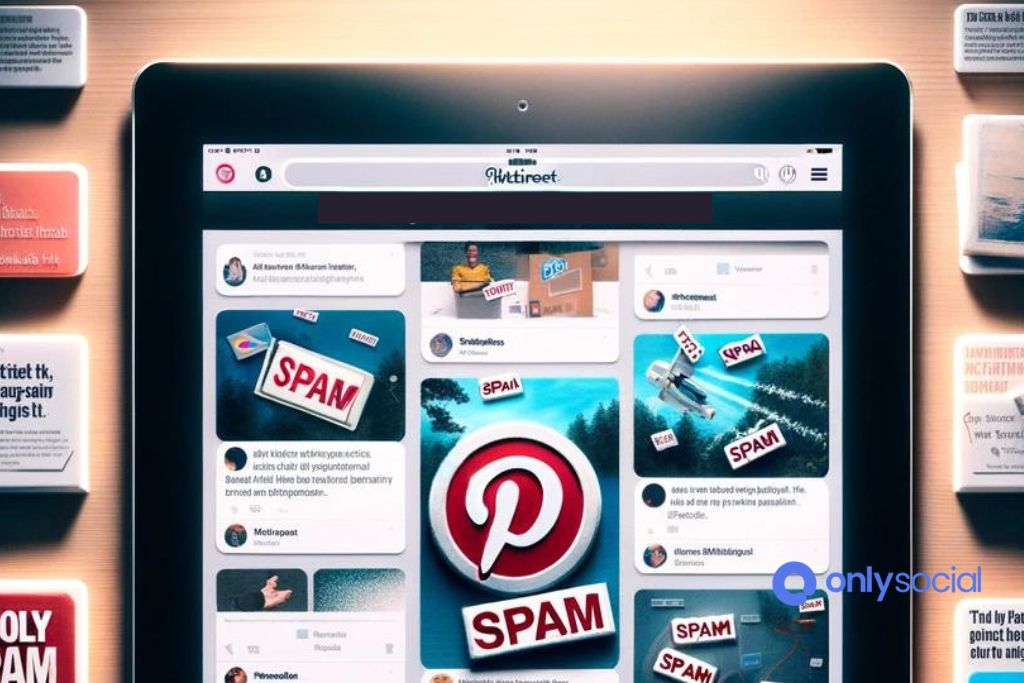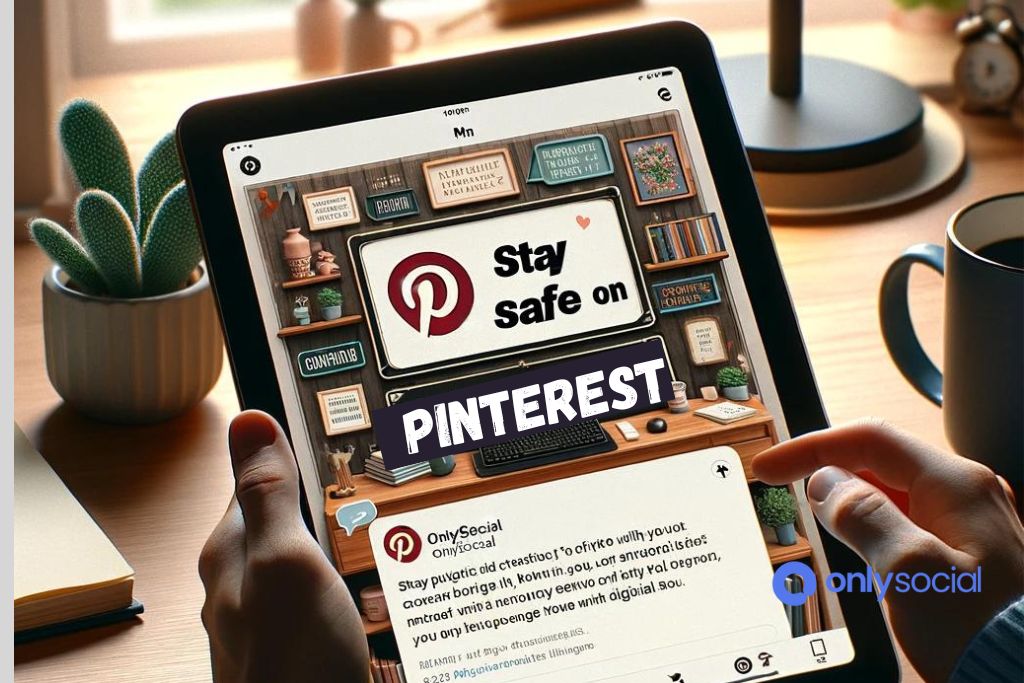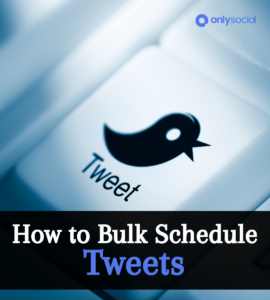Navigating the vibrant world of Pinterest, with its endless streams of creative ideas and inspirations, is a daily ritual for millions around the globe. This platform, beloved for its capacity to spark creativity and bring visions to life, also faces the unavoidable challenge of digital spam—unwanted content that can disrupt the user experience. As we embrace the possibilities that Pinterest offers in 2024, it becomes crucial for users to arm themselves with knowledge and strategies to stay safe on Pinterest.
Understanding how to identify, report, and manage spam is more than just a necessity; it’s the responsibility for each member of the Pinterest community to ensure the platform remains a safe, inspiring space for all. This guide is designed to empower you, whether you’re a seasoned spinner or new to the platform, with the tools and insights needed to navigate spam reports effectively, safeguard your account, and maintain the integrity of your Pinterest experience.
Table of Contents
- 1 Understanding Pinterest Spam in 2024
- 2 How Spam Affects Pinterest Users
- 3 Preventative Measures to Avoid Spam
- 4 Navigating Spam Reports on Pinterest
- 5 Recovering from Spam Attacks
- 6 Staying Updated with Pinterest’s Anti-Spam Policies
- 7 Leveraging the Pinterest Community to Stay Safe on Pinterest
- 8 BONUS
- 9 Frequently Asked Questions
Understanding Pinterest Spam in 2024

As we navigate the evolving landscape of social media, staying vigilant about potential threats becomes crucial. On platforms like Pinterest, where creativity and inspiration flourish, spam has emerged as a significant concern. Understanding what spam looks like on Pinterest in 2024 is the first step in ensuring you stay safe on Pinterest.
What Constitutes Spam on Pinterest?
Spam on Pinterest can take many forms, but at its core, it involves unsolicited content that detracts from the user experience. This could be anything from irrelevant comments on pins to misleading links that promise one thing but deliver another. More sophisticated spam tactics include the creation of fake accounts that mimic real users or brands, designed to lure unsuspecting Pinterest users into scams or phishing attempts.
Evolution of Spam on Pinterest
Over the years, spam on Pinterest has evolved, becoming more sophisticated and harder to detect. In 2024, spammers employ advanced techniques such as artificial intelligence to generate content that appears genuine or to automate interactions with users. These advancements make it increasingly challenging for both users and Pinterest’s own spam detection mechanisms to differentiate between legitimate content and spam.
Examples of Common Spam Types
- Misleading Pins: These are pins that appear to be about one topic but, once clicked, lead to unrelated websites, often pushing sales or gathering personal information.
- Fake Accounts: Spammers create accounts that look like real users or well-known brands to gain trust. These accounts may then distribute spam or malicious links.
- Phishing Links: Embedded in seemingly benign pins, these links aim to trick users into divulging sensitive information, such as passwords or credit card numbers.
The Role of Stay Safe on Pinterest Measures
To combat the threat of spam, Pinterest has introduced various measures aimed at helping users stay safe. These include enhanced reporting features that allow users to flag suspicious content directly and improved algorithms designed to detect and remove spam proactively. Additionally, Pinterest offers guidance and resources to educate users on identifying and avoiding spam.
Staying informed about the types of spam prevalent on Pinterest and how they might affect your browsing experience is essential. By understanding the signs of spam and utilizing Pinterest’s tools and resources to report and avoid it, users can significantly mitigate the risks and continue to enjoy the platform’s vast array of creative inspiration safely. Remember, staying safe on Pinterest is not just about protecting your account but also contributing to a safer, more enjoyable community for all users.
How Spam Affects Pinterest Users

Spam on Pinterest is not just an annoyance; it has tangible effects on the platform’s users, undermining the very essence of what makes Pinterest a go-to resource for inspiration and discovery. Understanding these impacts is crucial for anyone looking to stay safe on Pinterest, ensuring their experience remains positive and their content is secure.
Impact on Personal Accounts
For individual users, spam can significantly degrade the quality of their Pinterest experience. Unsolicited content may clutter their feeds, making it harder to find genuine, inspiring pins. Furthermore, engaging with spam inadvertently—such as clicking on a phishing link disguised as a legitimate pin—can lead to security breaches, including compromised account information and unauthorized posts.
Challenges for Content Creators and Businesses
Content creators and businesses face unique challenges when it comes to spam. For these users, Pinterest is not just a source of inspiration but also a crucial platform for engagement and marketing. Spam can dilute their brand’s presence, as spammy content competes with legitimate posts for visibility. This competition can lead to decreased engagement rates, as followers might miss new content amidst the spam. Additionally, if a business’s account is mistakenly marked as spam, it can temporarily lose its ability to communicate with its audience, disrupting marketing campaigns and affecting online reputation.
The Consequences of Ignoring Spam
Neglecting to address spam on one’s Pinterest account can have escalating consequences. Initially, it may lead to a cluttered feed and a poor user experience. Over time, however, the implications can become more severe. Accounts that frequently interact with spam—whether by pinning, commenting, or following spam accounts—may be flagged by Pinterest’s algorithms, leading to reduced visibility or, in extreme cases, account suspension. Such actions, even if corrected, can erode trust with one’s audience.
Mitigation through Vigilance and Reporting
Staying safe on Pinterest requires a proactive stance. Users must be vigilant, scrutinizing pins for authenticity before engaging with them. Reporting spam not only helps clean up your feed but also aids Pinterest in refining its spam detection algorithms, creating a safer environment for all users.
The effects of spam on Pinterest users underscore the importance of remaining alert and informed. As the platform evolves, so too do the tactics employed by spammers. Keeping abreast of the latest security practices and Pinterest’s guidelines is essential for safeguarding one’s account and ensuring a spam-free experience. Engaging responsibly and reporting suspicious content are key steps every Pinterest user can take to contribute to a safer, spam-free community.
Preventative Measures to Avoid Spam

Ensuring you stay safe on Pinterest involves adopting a proactive stance toward security and spam prevention. Here are strategies and tips designed to help you navigate and reduce the risk of spam on your Pinterest account:
1. Recognize Spam Content
- Educate yourself on the common characteristics of spam on Pinterest, such as unsolicited commercial messages, posts that ask for personal information, or links that lead to suspicious websites.
- Stay updated with Pinterest’s guidelines and examples of spammy content to better identify potential threats.
2. Secure Your Account
- Use strong, unique passwords for your Pinterest account and change them regularly.
- Enable two-factor authentication (2FA) to add an extra layer of security, making it harder for unauthorized users to gain access to your account.
- Regularly review account activity and check for any unfamiliar actions or posts made in your name, indicating potential security breaches.
3. Customize Privacy Settings
- Adjust your privacy settings to control who can see your pins and boards and who can follow you. Limiting exposure can reduce the likelihood of attracting spam.
- Manage who can comment on your posts to prevent spammy interactions and safeguard your boards from unwanted content.
4. Be Cautious with Links and Attachments
- Avoid clicking on suspicious links, even if they appear in the pins or messages from known contacts, as they may have been compromised.
- Never download attachments from unknown or untrusted sources to avoid malware that could hijack your account or computer.
5. Engage Wisely
- Be selective with whom you follow and interact with on Pinterest. Engaging with reputable accounts can decrease the chances of encountering spam.
- Avoid repinning content without verifying its authenticity and safety, as repinning can spread spam across the platform.
6. Report Spam Proactively
- Use the report feature to alert Pinterest about potential spam. Reporting helps Pinterest identify and take action against spammy content, making the platform safer for everyone.
- Encourage your followers to report suspicious activities and content, fostering a community effort in combating spam.
7. Educate Your Network
- Share best practices for staying safe on Pinterest with your network. Educating others about spam prevention can collectively enhance security for all users.
8. Keep Software Updated
- Ensure your browser and any Pinterest-related applications are up to date with the latest security patches and updates. Outdated software can be vulnerable to exploits used by spammers.
9. Follow Pinterest Updates
- Stay informed about Pinterest’s latest features and updates related to security and spam prevention. Utilizing new tools and settings can further protect your account.
Adopting these measures can significantly help you stay safe on Pinterest, creating a more enjoyable and secure environment for sharing and discovering content. Remember, vigilance and proactive measures are key in combating spam and maintaining the integrity of your Pinterest experience.
Navigating Spam Reports on Pinterest
Understanding the Importance of Reporting Spam
To stay safe on Pinterest, it’s vital to not only be aware of potential spam but to take action against it. Reporting spam helps Pinterest improve its algorithms to detect and prevent future spam, making the platform safer for everyone.
How to Report Spam on Pinterest
- Identify the Spam: Recognize what constitutes spam on Pinterest, such as unsolicited commercial messages, misleading links, or inappropriate content.
- Use the Report Button: For any pin, comment, or message that seems like spam, click or tap the “Report” button usually found in the options menu.
- Select the Reason for Reporting: Choose the option that best describes why the content is spam. Providing accurate information helps Pinterest take appropriate action.
- Submit the Report: Once you’ve selected the reason, submit your report. Pinterest reviews reports to determine if the content violates their community guidelines.
The Review Process Explained
After submitting a spam report, Pinterest’s review team assesses the content against their community guidelines. This process may take some time, depending on the volume of reports. If the content is found to violate guidelines, it will be removed, and the account posting the spam may be penalized.
Handling False Spam Reports on Your Content
If your content is mistakenly reported as spam, Pinterest offers a process to appeal the decision:
- Review the Notification: Understand why your content was flagged.
- Submit an Appeal: Use the link provided in the notification to appeal the decision. Be prepared to explain why your content should not be considered spam.
- Wait for the Review: Pinterest will review your appeal and notify you of the outcome. This process can help restore your content if it was wrongly flagged.
Proactive Measures for Content Creators
To minimize the risk of your content being flagged as spam, ensure that your pins and posts are clear, relevant, and comply with Pinterest’s guidelines. Engage genuinely with the community and avoid excessive self-promotion or posting repetitive content.
Tips for Staying Safe
- Regularly update your Pinterest privacy and security settings.
- Be cautious with the content you interact with and report anything suspicious.
- Educate yourself on the latest spam trends on Pinterest to better identify potential threats.
Navigating spam reports is a significant aspect of ensuring you stay safe on Pinterest. By understanding how to report spam effectively and taking steps to prevent your content from being mistakenly flagged, you contribute to a safer, more enjoyable community on Pinterest.
Recovering from Spam Attacks
Recovering from spam attacks on Pinterest is crucial to ensure your account’s security and to maintain the trust of your followers. Here are practical steps to regain control and ensure you stay safe on Pinterest after experiencing a spam attack.
Regain Control of Your Account
- Change Your Password Immediately
- As soon as you notice suspicious activity, change your password. Use a strong, unique password that combines letters, numbers, and symbols.
- Check Account Permissions
- Review the apps and services connected to your Pinterest account. Revoke access to any you don’t recognize or no longer use.
- Verify Account Details
- Ensure your email address and other account details haven’t been altered. Update these details if necessary.
Notify Pinterest and Your Followers
- Report the Spam to Pinterest
- Use the reporting tools provided by Pinterest to inform them of the spam attack. Provide as much detail as possible about the incident.
- Inform Your Followers
- Share a brief, honest message with your followers about the spam attack. Advise them to disregard any odd activity or suspicious links shared from your account during the attack period.
Restore Your Pinterest Reputation
- Review and Clean Up Pins
- Go through your boards and pins, removing any spammy content that was posted during the attack. This might be time-consuming but is essential to restore your account’s integrity.
- Re-engage with Your Audience
- Once your account is secured and cleaned up, start re-engaging with your followers. Share new, genuine content to rebuild trust and engagement.
- Implement Preventative Measures
- To prevent future spam attacks, consider enabling two-factor authentication for an added layer of security. Regularly review and update your account’s privacy settings.
Seek Support if Needed
- If the spam attack has resulted in significant damage or you’re struggling to regain control of your account, don’t hesitate to contact Pinterest’s support team for assistance. They can provide guidance and take necessary actions to secure your account.
Stay Informed About Security Practices
- Keep yourself informed about the latest security practices and threats. Pinterest often updates its community guidelines and security recommendations. Staying updated will help you safeguard your account against future spam attacks.
Ensuring you stay safe on Pinterest, especially after a spam attack, involves prompt action, transparency with your audience, and implementing security measures to prevent future incidents. It’s about being proactive in maintaining the security of your account and the safety of your online community.
Staying Updated with Pinterest’s Anti-Spam Policies
Navigating the digital landscape requires vigilance, especially on platforms like Pinterest, where creativity meets connectivity. To stay safe on Pinterest, it’s crucial to be informed about the platform’s ongoing battle against spam and its efforts to enhance user experience through robust anti-spam policies.
Understanding Pinterest’s Commitment to Safety
Pinterest is committed to creating a safe and inspiring environment for its users. This commitment is reflected in the continuous evolution of its anti-spam policies and mechanisms. These policies are designed to detect, prevent, and mitigate spam activities that could undermine the integrity and enjoyment of the platform. Recognizing the importance of these policies helps users stay safe on Pinterest and ensures a trustworthy space for sharing and discovering content.
The Mechanics Behind Pinterest’s Anti-Spam Efforts
Pinterest employs advanced technology and a dedicated team to combat spam. Machine learning algorithms and pattern detection techniques play a significant role in identifying potential spam content before it reaches the wider community. These technologies are constantly updated to adapt to new spamming techniques, making it imperative for users to stay informed about the latest security measures and how they can benefit from them.
Regular Policy Updates and User Education
Pinterest regularly updates its anti-spam policies in response to emerging threats and user feedback. These updates are communicated through various channels, including the Pinterest Help Center, official blogs, and email newsletters. Engaging with these resources empowers users with the knowledge to identify potential threats and understand the best practices for reporting spam, contributing to a safer Pinterest environment.
Active User Participation in Policy Evolution
User feedback is a cornerstone of Pinterest’s policy development process. The platform encourages its community to report suspicious activities and provides easy-to-use tools for reporting spam. This user input is invaluable for refining detection algorithms and updating policies to better serve the community’s needs. Active participation from users not only helps in keeping individual accounts safe but also protects the broader Pinterest community.
The Importance of Staying Informed
To stay safe on Pinterest, users should make a habit of regularly consulting the platform’s resources for any updates on anti-spam policies. Understanding these policies and how they are applied helps users navigate the platform more confidently and securely. It also aids in fostering a collaborative effort between Pinterest and its users to maintain a positive and inspiring online space.
Utilizing Educational Resources
Pinterest offers a wealth of educational materials aimed at helping users recognize and avoid spam. These resources, available through the Pinterest Help Center and community forums, provide tips, best practices, and guidelines for maintaining account security. Leveraging these resources enhances one’s ability to stay safe on Pinterest while enjoying all the creativity and inspiration the platform has to offer.
Staying updated with Pinterest’s anti-spam policies is not just about protecting oneself; it’s about contributing to a safer, more enjoyable community for all. As Pinterest continues to evolve its strategies against spam, the platform relies on an informed and proactive user base to help sustain a secure and vibrant environment for sharing and discovery.
Leveraging the Pinterest Community to Stay Safe on Pinterest
The Pinterest community plays a crucial role in ensuring a safe and positive experience for all users. This vast network of individuals, from casual browsers to serious content creators and businesses, can be a powerful ally in your efforts to stay safe on Pinterest. Here are practical ways to engage with the community to enhance your safety on the platform:
Share and Learn from Experiences
One of the most straightforward methods to stay safe on Pinterest is by sharing your experiences and learning from others. Whether it’s through comments on pins, participating in group boards, or engaging in Pinterest forums, exchanging knowledge about potential threats can help everyone stay one step ahead of malicious actors. Discussing how to identify and report spam, for instance, raises awareness and equips users with the knowledge to protect themselves and others.
Create Awareness Pins
Creating pins that educate others about the importance of safety on Pinterest can have a ripple effect, spreading vital information across the network. These can include infographics on spotting spam, tips for securing accounts, or guides on reporting suspicious activity. Such content not only helps others but also establishes you as a knowledgeable and trustworthy member of the Pinterest community.
Engage in Collaborative Boards
Participating in or creating collaborative boards dedicated to Pinterest safety can foster a sense of community and collective action. These boards can serve as a centralized place for sharing updates on new spam tactics, security tips, and guidelines for safe pinning practices. Collaboration encourages active participation in safety efforts and can make the information more accessible to a wider audience.
Support Victims of Spam
Support for individuals who have been affected by spam is crucial. If you notice a fellow pinner struggling with spam attacks or false spam reports, offering guidance and moral support can make a significant difference. Directing them to resources, assisting in reporting issues, and simply providing reassurance can help mitigate the stress and isolation often felt by victims of spam.
Advocate for Safe Pinning Practices
Actively advocating for safe pinning practices within your network can reinforce the importance of safety on Pinterest. Encourage your followers to adopt secure account settings, be discerning about the pins they interact with, and promptly report suspicious content. The more users adopt these practices, the safer the Pinterest environment becomes for everyone.
The collective effort of the Pinterest community is indispensable in maintaining a secure platform. Through active engagement, sharing of knowledge, and mutual support, users can significantly contribute to a safer Pinterest experience. Remember, staying safe on Pinterest is not just about individual actions but also about how we can help protect and educate each other within this vibrant online community.
BONUS
In the evolving landscape of social media, Pinterest remains a cornerstone for creative content sharing and inspiration. However, with the platform’s growth, spam reports have become a common challenge for users in 2024. It’s crucial to understand the mechanisms of reporting and resolving these issues to maintain a healthy and engaging presence on Pinterest. By recognizing the signs of spammy content and knowing how to effectively report them, users can contribute to a safer online community. It’s also important to familiarize oneself with Pinterest’s guidelines to avoid unintentional violations that could lead to reports against your own content.
In navigating the complexities of social media management across various platforms, including Pinterest, OnlySocial’s Post Planning and Scheduling function emerges as an indispensable tool. It simplifies the process of managing content by offering unlimited posting capabilities and the ability to handle unlimited social profiles seamlessly. By leveraging OnlySocial, users can ensure their content reaches the right audience at the optimal time without the risk of spamming or violating platform-specific guidelines. Experience the efficiency and ease of social media management with a commitment-free 7-day trial today.
Frequently Asked Questions
What are the best practices to stay safe on Pinterest?
To ensure your safety on Pinterest, always use a strong, unique password for your account, enable two-factor authentication, and be cautious about the personal information you share. Also, familiarize yourself with Pinterest’s community guidelines to understand what is considered safe and acceptable on the platform.
How can I identify spam on Pinterest?
Spam on Pinterest often includes pins or comments that are irrelevant, overly promotional, or contain suspicious links. Watch out for accounts that post excessive amounts of similar content or send unsolicited messages. Trustworthy pins typically come from accounts with a clear history and genuine interactions.
What should I do if I encounter spam on Pinterest?
If you come across spam, report it immediately to Pinterest by using the report feature available on every pin, comment, or profile. This helps Pinterest identify and remove spam more quickly, keeping the platform safer for everyone.
Can my account be mistakenly marked as spam on Pinterest?
Yes, it’s possible for your account to be mistakenly flagged as spam by Pinterest’s automated systems or by other users. If this happens, contact Pinterest’s support team to appeal the decision and provide any necessary information to prove your account’s legitimacy.
How does Pinterest handle reported spam?
When spam is reported, Pinterest reviews the content against their community guidelines. If the content is found to violate these guidelines, Pinterest may remove it and take action against the account, ranging from a warning to permanent suspension, depending on the severity of the violation.
Are there specific features on Pinterest that help me stay safe?
Pinterest offers several features to enhance user safety, including privacy settings that allow you to control who can see your pins and boards, security features like two-factor authentication, and the ability to block or report users who violate Pinterest’s guidelines.
How often does Pinterest update its safety features and spam detection algorithms?
Pinterest continuously updates its safety features and spam detection algorithms to respond to new threats and improve the user experience. While specific update frequencies are not publicly disclosed, users are encouraged to keep their app or browser version updated to benefit from the latest security enhancements.
What role does the Pinterest community play in maintaining safety on the platform?
The Pinterest community plays a crucial role in maintaining safety by reporting suspicious activity, sharing safety tips with each other, and creating a supportive environment. Pinterest encourages users to actively participate in these community-driven efforts to help keep the platform safe and enjoyable for everyone.
Where can I find more resources on how to stay safe on Pinterest?
For more resources on staying safe on Pinterest, visit the Pinterest Help Center and the Pinterest Safety Center. These platforms provide detailed guides, safety tips, and updates on new features designed to enhance user safety.




